#The Book of Hebrews
Text
I'd like to introduce you to LJS 57, a compendium of Astronomical text in Hebrew, written in Spain around 1391. It's an interesting combination of astronomy and astrology, and illustrates how the division between "science" and "not science" was not nearly so clear in the past as it is today. It has some fantastic illustrations of constellations!
🔗:
#medieval#manuscript#medieval manuscript#14th century#hebrew#astronomy#astrology#stars#constellations#illustrations#illuminations#diagrams#history of science#book history#rare books
4K notes
·
View notes
Text
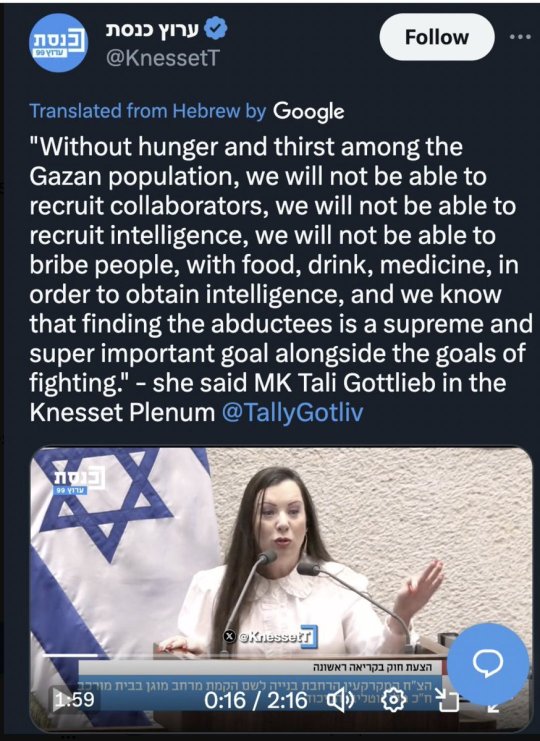
Lady, you are literally admitting to a war crime on tv.
#israel#politics#news#palestine#free palestine#muslims#south africa#democrats#republicans#woc#books#history#hebrew#wtf#human rights#poc
5K notes
·
View notes
Text

Abraham's sacrifice of Isaac is halted by an angel. Fresco in St. Sofia Cathedral, Kyiv, Ukraine, painted ca. 1000.
#art#art history#Middle Ages#medieval#medieval art#Ukraine#Ukrainian art#religious art#Biblical art#Christian art#Sacrifice of Isaac#Old Testament#Hebrew Bible#Book of Genesis#fresco#Orthodox Christianity#Eastern Orthodox
253 notes
·
View notes
Text

The world’s first printed book in Hebrew was Rashi’s commentary on the Bible, printed by Abraham ben Gart in Reggio di Calabria, Italy, in 1475.
Unfortunately, very little is known about the personal life of Abraham ben Garton. Most scholars believe he was born in Spain, and emigrated to Southern Italy's Calabria prior to the expulsion of the Jews from Spain in 1492. Many other Spanish Sephardim also emigrated to Calabria following the expulsion.

The 1475 edition Abraham Garton created and employed, for the first time, a typeface based on a Sephardic semicursive hand. It was this same style of typeface that a few years later, when commentary and text were incorporated onto one page, would be used to distinguish Rabbinic commentary from the text proper. Ultimately, this typeface would be known as Rashi script.
View of the Interior of one of the chapels in the Cathedral of Reggio di Calabria—ancient Rhegium. This chapel focuses on the "giving of the law" to Moses. Note the prominent menorah.
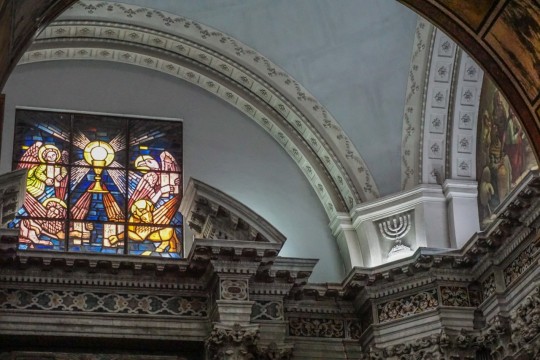
Follow us on Instagram, @calabria_mediterranea
#reggio calabria#calabria#italy#italia#italian#south italy#southern italy#mediterranean#europe#book#books#hebrew#jews#jew#judaism#jews and judaism#history#talmud#hebrew bible#jewish history#menorah#religion#church#cathedral#architecture#religious#jewish culture
83 notes
·
View notes
Text


Sometimes our #ManuscriptMonday posts are beautifully preserved specimens, and sometimes they're survivors that have persisted for centuries against all odds. This is one of the survivors.
After they outlived their usefulness, many medieval manuscripts were cut up and recycled into book covers, binding reinforcements, and even linings for clothing, shoes, and musical instruments. Parchment is durable, flexible, and expensive to produce, so it makes sense that people found ways to reuse it instead of merely throwing it away.
Reuse of Hebrew parchments like this one, however, can bear witness to both medieval recycling practices and religious persecution. This fragment is from tractate Menachot, part of the Talmud, which was subjected to confiscation, censorship, and public burnings in medieval Europe starting in the thirteenth century. We don't know whether this specific fragment was taken from its community by force, but many like it were.
Some medieval Hebrew texts are all but lost, known today only through surviving fragments. Read more about "The European Genizah" in a recent article by Simcha Emanuel in Tablet magazine.
Tractate Menachot, 33-34. Part of a very large 3-column manuscript of the Talmud, in Hebrew, Tractate Menachot, 33-34, Ashkenazi, presumably Germany, approximately thirteenth century, red stains. University of Missouri Digital Library.
#manuscript monday#manuscripts#medieval manuscripts#manuscript recycling#talmud manuscripts#hebrew manuscripts#manuscript fragments#fragmentology#mizzou#special collections#rare books#bookhistory#university of missouri#libraries#private collection#fb#kelli h
180 notes
·
View notes
Text

Not a want but a need etc
53 notes
·
View notes
Note
Hi friend! I was wondering if you had any favorite Israeli/Hebrew children's books! Also any fave Israeli musicians??
Hello, my lovely! :D How are you?
Ooooh, do I! Man, you're gonna regret asking me this. XD Sorry, not sorry... So shall we start with Israeli/Hebrew kids' books?
Anything by Yehuda Atlas (יהודה אטלס), but especially And That Kid is Me (והילד הזה הוא אני). Short humorous stories, written in rhymes, perfectly capturing how baffling the world can be for a kid, and how silly adults can seem, or just what things can sometimes feel like for a child. It's one of those books that work, funny and essential, 'coz it's so true. He just gets kids.
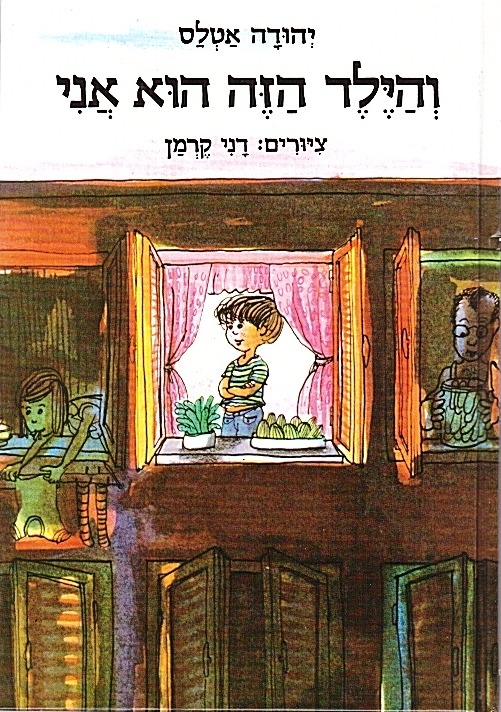
Another one that I love, and am probably one of the few Israeli kids who even know this book, is Siamina and the Cats of Yemin Moshe (סיאמינה והחתולים של ימין משה) by Holocaust survivor Uri Orlev (אורי אורלב. He's more well known for his books about that period of time, which are also highly recommended, but I only dared read them when I was older). Jerusalem is known for its many stray cats, and the book is a love fest for cats and Jerusalem, with some historical sites becoming in the book the "homes" of the cats.

David Gershtein, who crafted the engravings for the book, is a pretty popular Israeli artist, and you can find some of his creations all over the country, and even entire shops dedicated to his works.

Last one ('coz I don't wanna burden you too much, but lemme know if you want more recs!) that I really loved as a kid, was Yael's House (הבית של יעל) by Miriam Rot (מרים רות). It was about a girl who has a home, but she wants a house that would be all her own. She tries all sorts of solutions, including taking over the space under the kitchen table... Not gonna lie, as a kid I was inspired to follow in her footsteps, but my parents were not impressed.
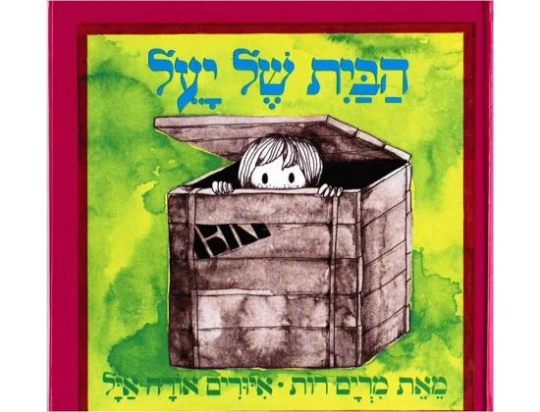
Now, as for Israeli musicians! You have stumbled onto dangerous ground, my friend, since I'm a music addict, and in love with the Hebrew language, so songs in Hebrew are something I can go on about for freaking years...
I'll share with you the link to two unlisted playlists that I made on YouTube. One is of some of my fave Israeli songs (though I started it years ago, so sadly, I see some vids have been deleted or made private, and there are literally hundreds of songs on the list, meaning I'm not sure which ones are missing), but also with a few thrown in 'coz I think they're good for people who wanna know Israeli culture and popular Israeli songs, and the other is one that I started making with songs connected in different ways to the current war we're in. They're not all faves, but I thought they capture a moment in time, so I wanted to have them grouped together. I'm actually not done with either list, the latter I really just started not that long ago, so you can expect them to grow.
If we're talking specific Israeli musicians, I find it hard to answer, I think almost every singer or songwriter has at least one good song to offer, and likewise whenever I wanna name one, I feel like adding, "Except for this song... and that one..." No musician is great all the time. But I guess some of my faves (where I like more songs than I don't) include Ivri Lider, Berry Sakharof, Yehuda Poliker, Ran Danker, Harel Ska'at, Chanan ben Ari, Narkis, Eliad, Amir Dadon, Avraham Tal, Marina Maximilian, Achinoam Nini (Noa), Sheila Ferber, Gilad Segev, Ofra Chaza, Meni Berger, Yardena Arazi, Natan Goshen, Keren Peles, Izhar Ashdot, Nurit Galron, and the bands Beit Ha'bubot, Ha'Yehudim, Metropolin, Ethnix, Mashina and Synergia.
I was thinking I should add at least one of these vids to my reply, and for whatever reason, the one that started playing itself in my head (where there is always music) was a song first released in 1993, אדמה חמה (Hot Earth) by Shlomo Gronich and the Shva Choir (Sheba is the English pronunciation of Shva). I love this song, I think the vid was very cool for its time, and I'm still never gonna forgive the MTV viewers who gave it last place in a video music awards. The song incorporates Hebrew and Amharic, both Semitic languages, the latter being the language spoken by Ethiopian Jews. You can actually listen to the whole special album (inspired by the story of the Ethiopian Jewish community's journey to Israel) here.
youtube
But just for the fun of throwing in a gay themed song as well, here's התשמע קולי (Will You Hear My Voice), a love poem for a man, originally written by an Israeli poet called Rachel (full name: Rachel Bluwstein Sela), but it's performed here by only men, and no one changed the pronouns, which makes it a mlm song to me. It's so pretty and sad (Rachel is believed to have written the poem to a former lover, a man she even thought at one point she would marry, but WWI tears them apart and they never meet again. She wrote this poem, after getting the news that she's terminally ill), it fills my soul at the same time as it tugs on my heart.
youtube
I hope this helps! Sending so much love! xoxox
#ask#gingerpolyglot#israeli#israel#music#hebrew music#israeli music#israeli books#hebrew books#jewish#hebrew#jumblr#frumblr#fandom love
37 notes
·
View notes
Text
From the beginning, the Zionist “redemption of the land” was associated with the so-called “revival of Hebrew” (Saposnik, 2010), with “Hebrew” being used in relation to a range of issues beyond the tongue one speaks. Hebrew became a marker of nationality, with references to ideas such as the “Hebrew nation”; it became (as part of this mark of nationality) the idiom organizing economic relations, particularly in the Zionist campaign for “Hebrew labor” (Avoda Ivrit) that was, in fact, a call to boycott Arab workers in the Jewish colonies (see Khalidi, 1997; Shafir, 1989); and it played a role in transforming space and reclaiming Jewish ownership while negating the indigenes’ claims to the land, via toponymic changes (replacing Arabic with Hebrew names) and remapping projects, which are at the core of settler colonial movements (Abu El Haj, 2001; Benvenisti, 2002; Masalha, 2007). On all these different levels, “Hebrew” was the mark and tool of the de-Arabization of the land.
In addition, language helped in shaping the racial contours of the land's inhabitants. After being one of the basic elements in the orientalization of Jews in Europe through the creation of the “Semite” as a linguistic-racial category (Anidjar, 2007), language (this time Hebrew, rather than “Semitic” languages) became one of the key elements in the de-orientalizing of the Jew: Hebrew was able to “return” to the east, to become the language of the land (Palestine), only after it was reconstructed as a European language, dissociated from its oriental and Semitic origins. Rather than being conceived as an indigenous language rooted in the historic and contemporary East—a relative, as it were, of Arabic—Hebrew thus became part of the westernization of the land.
The demand to speak Hebrew was, accordingly, entangled with the demand to abandon, simultaneously and relatedly, Arabic and (Arab) native-ness. The Arab-Jews were caught up in this effort to eliminate Arabic as part of an effort to displace Arabs. Arabic, their own language, was gradually labeled a foreign language, and then the language of the enemy.
When does a native become a settler? by Yuval Evri, Hagar Kotef, 15 June 2020
#palestine#hebrew#arabic#settler colonialism#middle east#essay#dark academia#history#spilled ink#light academia#words words words#books and reading#spilled thoughts#books & libraries#jews#anti zionisim
69 notes
·
View notes
Text

יהושע פראוור, תולדות ממלכת הצלבנים בארץ ישראל (ירושלים: מוסד ביאליק, 1971)
Joshua Prawer, History of the Crusader Kingdom [of Jerusalem] in the Land of Israel (Jerusalem: Bialik Institute, 1971)
100 notes
·
View notes
Text
Today we're celebrating the eclipse with diagrams from several manuscripts from the Schoenberg Collection! They range from the 13th to the 16th centuries, and include texts in Latin, Hebrew, Arabic, and Persian. You'll see, however, that the diagrams in the different books are quite similar to each other!
To watch the complete 30-minute video, go to YouTube:
#medieval#manuscript#book history#rare books#astronomy#eclipse#history of astronomy#history of science#diagrams#lunar eclipse#solar eclipse#spheres#celestial spheres#Latin#Hebrew#Arabic#Persian
138 notes
·
View notes
Text

some bart art
ID under read more
[ID: a digital drawing of a young man of Egyptian looks. He’s floating above a pentacle, crossed-legged with his back at the viewer and his hands raised above his head, stretching and looking at the viewer. He has tanned skin, black hair cut in a bob with straight bangs, yellow eyes with feline pupils and sharp canines. He’s wearing nothing but a white linen clothe and gold cuffs on his wrists. The pentacle is drawn in white chalk and have a pentagram in the middle, which has a red candle in each of it’s corners. Between the candles are written the names Bartimaeus, Bartimaeus of Uruk, Sakhar al-Jin, Necho of Jerusalem and Rakhit of Alexandria, all in square Hebrew script. Bartimaeus himself is surrounded by red smoke, that doesn’t leave the confines of the pentacle. The background is solid dark grey. There’s a watermark that reads Jewishicequeen on the centre of the picture. End ID.]
#ayala's art#trying out id please tell me how i did!🙏#bartimaeus#bartimeus trilogy#bartimaeus sequence#jonathan stroud#djinni#don’t use hebrew for magic art unless you’re Jewish!#digital artist#art#books#fantasy#illustration
71 notes
·
View notes
Text
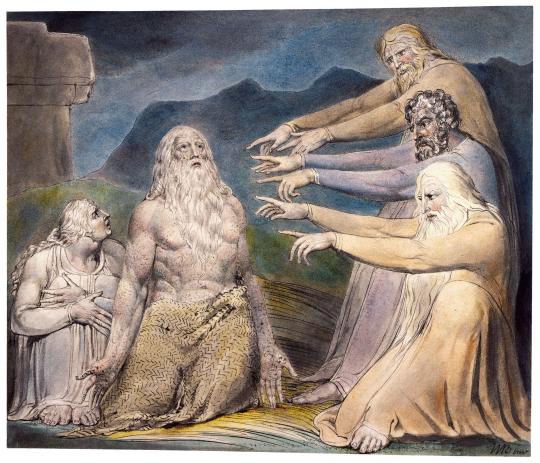
Job Rebuked by His Friends, William Blake, 1805
#art#art history#William Blake#religious art#Biblical art#Christian art#Christianity#Old Testament#Hebrew Bible#Book of Job#wisdom literature#Romanticism#Romantic art#English Romanticism#British art#English art#19th century art#pen and ink#watercolor#Morgan Library and Museum
819 notes
·
View notes
Text

“We must consider how to rouse one another to love and good works.”
Hebrews 10:24
#christianity#christian#faith#religion#theology#catholic#catholicism#bible verse#book of Hebrews#daily bible reading#daily bible study#daily bible verse#bible scripture#biblical scripture#scripture study#scripture#daily scripture#christian bible#bible study#bible quote#bible reading#bible teaching
38 notes
·
View notes
Text
to an extent I feel really uncharitable about European and/or western authors but also authors in general refusing to translate their works into Hebrew because the thing is that there once were a bunch of publishing houses and presses that published books in Hebrew, alongside other Jewish languages and Jewish books in shared languages, outside of ha medinas and those were all destroyed along with the rest of Jewish culture in many of these places without new presses being built and established in these areas. If you refuse to translate a book to Hebrew due to the politics of hamedinas it’s incumbent on authors to provide an alternative way for their books to be published in Hebrew or for presses to be built outside of that context.
#Very necropolitical idk.#Loads of books were translated and printed into Hebrew in pre-Shoah Eastern Europe
38 notes
·
View notes
Text

MAHZOR. (Tuscany, c1490) A Jewish holiday prayerbook. Gold highlights, initial word panels throughout in burnished gold on red, green or blue grounds, some embellished with marginal sprays, text illustrations Edges gilt and gauffered
Mid 16th-century Italian gold-tooled dark brown goatskin over thin wooden boards with strapwork painted in red and yellow, both covers with central cartouche with coat of arms, elaborately decorated with a unicorn and rabbit, hatched leaf and flower tools, solid dots and foliate rolls.

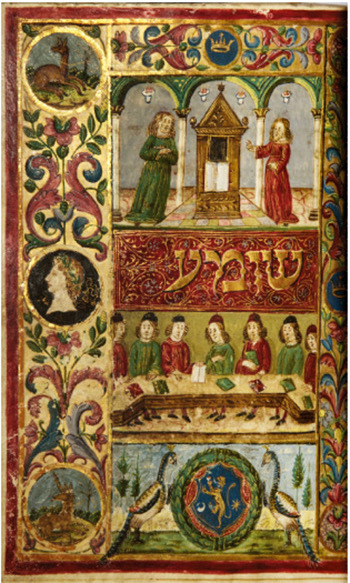
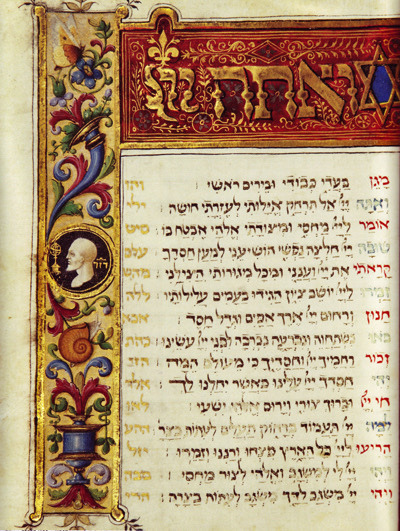

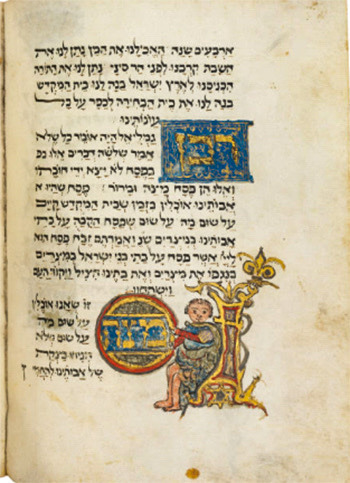

source
#beautiful books#book blog#books books books#book cover#books#vintage books#illustrated book#hebrew#mahzor#15th century#gauffered edges#illuminated manuscript#fore edge painting
55 notes
·
View notes